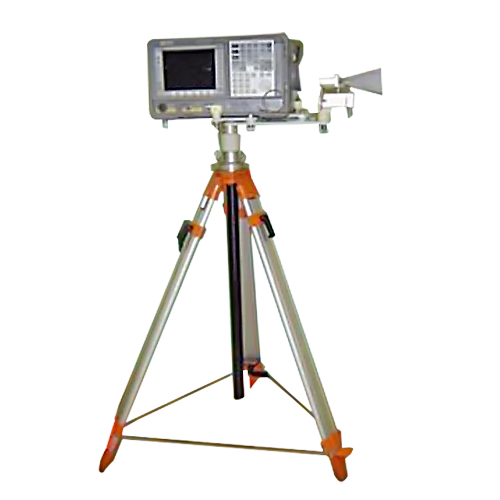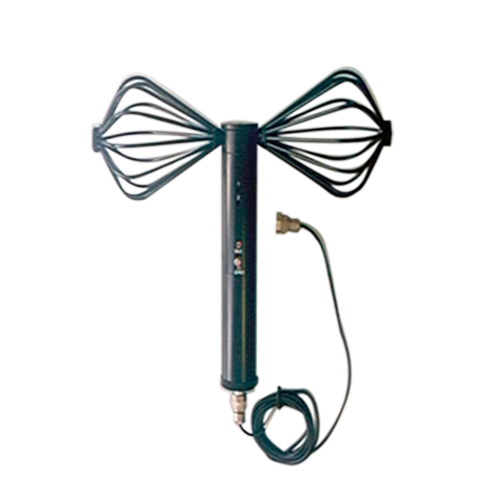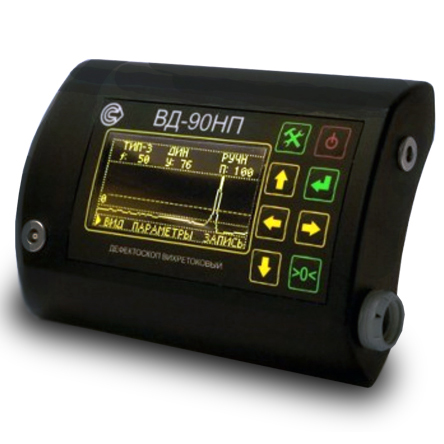Catalog
Search
1059 products
View:
- Selected: 1Applying
- Selected: 0Names
- Selected: 0Manufacturer
- Selected: 0Made in
- Selected: 0Additional
View:
1059 products
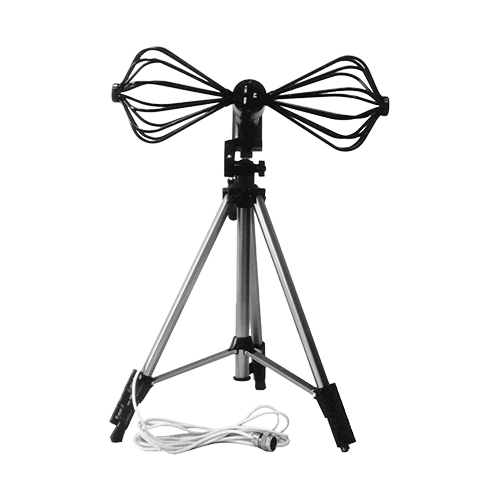
Antenna dipole P6-52
The antenna is passive.
It can be operated indoors and outdoors.
NNPO im. M.V.Frunze
Nizhny Novgorod
Produced in: Nizhny Novgorod
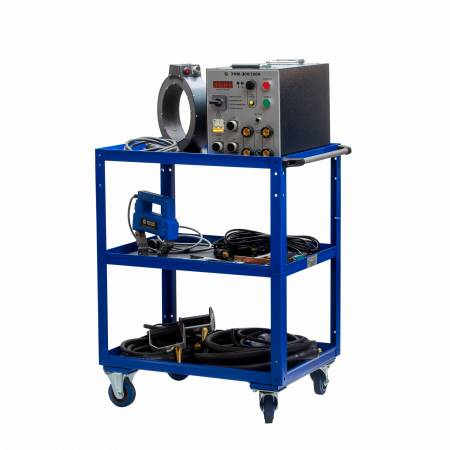
UNM-300/2000 portable magnetizing device
The principle of operation of the magnetic particle flaw detector:
The device provides monitoring and detection of surface defects by the applied field method or by the residual magnetization method.
The kit with the device includes power cables, remote solenoids, and an electromagnet, with which you can produce longitudinal or circular magnetization of the part. A trolley is provided for the transportation of technical equipment and the detection of defects in the field. Magnetization is carried out by alternating, direct or pulsed current of large magnitude, due to which high values of the magnetizing field strength are achieved.
Features and advantages of the UNM-300/2000 magnetic powder control device:
Microprocessor control, which allows you to memorize and accurately reproduce the desired modes and selected measurement parameters, as well as work as part of automated stands and control systems;
The magnetizing device has a digital indicator on the front side and a control panel for selecting the operating mode, type and current strength;
Automatic recognition of the type of connected external magnetizing device;
Device temperature control and automatic shutdown in case of overheating;
Remote connected magnetization devices allow you to control the quality of parts and assemblies of complex shape;
Automatic demagnetization of controlled assemblies and parts;
The equipment meets the requirements of the following standards: GOST R 56512-2015, GOST R 53700-2009 (ISO 9934-3:2002), GOST R 50.05.06-2018, GOST R ISO 10893-5-2016, GOST ISO 17638-2018, RD 34.17.102-88 and RD-13-05-2006;
Devices of the MANUL series (UNM-300/2000 and others) are approved for use by the Russian Railways.
Scope of application:
Magnetic particle flaw detection is indispensable where quality control of various critical and loaded assemblies and parts is required, detection of surface defects that occur during their production, storage and operation.
The device may be in demand:
at factories for the production and repair of automotive, aviation and railway equipment, metro enterprises, military-industrial complex (inspection of shafts, axles, wheel pairs, pistons, beams, springs, etc.);
in civil and military shipbuilding, elevator and crane enterprises (control of rigging equipment, hooks, etc.);
at pipe rolling plants (determination of defects in rolled products);
in the oil and gas, chemical industry (inspection of welds of equipment operating under pressure).
The UNM-300/2000 portable magnetic particle flaw detector has a relatively small weight and dimensions, which allow it to be used as a stationary or portable device in specialized quality control laboratories or in ordinary workshops, garages, hangars, locomotive depots or warehouses.
The UNM 300/2000 device, as well as other means of magnetic powder control, are normally used together with auxiliary equipment for the preparation and application of magnetic powder (suspension), for fixing the indicator pattern, magnetometers for determining residual magnetization, visual inspection means – magnifiers and endoscopes, as well as with ultraviolet irradiators in the case of fluorescent powders.
Technical specifications
Magnetization currents
Variable,
Pulse,
Rectified (only for solenoid and electromagnet)
The measurement error of the magnetization current is no more than 10%.
characteristics of the pulse current
The repetition frequency of unipolar current pulses during magnetization and of multipolar current pulses during demagnetization is (2 ± 0.2) Hz.
The duration of the current pulses is at least 1.5 ms.
Magnetic characteristics of the solenoid
The maximum alternating magnetic field in the center of a single solenoid is at least 100 A/cm.
The maximum alternating magnetic field on the axis in the center between two solenoids located at a distance of 200 mm is at least 60 A/cm.
The maximum permanent magnetic field in the center of a single solenoid is at least 80 A/cm.
The maximum permanent magnetic field on the axis in the center between two solenoids located at a distance of 200 mm is at least 50 A/cm.
Values of magnetization currents
The maximum alternating magnetization current in the unwound cable 6 m × 50 mm2 and on the electrical contacts is at least 1000 A.
The maximum pulse magnetization current in an unwound cable of 4 m × 10 mm2 and on electrical contacts is at least 2000 A.
The current adjustment range in the solenoids and the electromagnet is from 0.5 to 4.5 A.
Characteristics of the electromagnet
The maximum alternating magnetic field in the air gap of the electromagnet depending on the interpolar distance is as follows:
- in the 140 mm gap: at least 75 A/cm;
- in the 40 mm gap: at least 300 A/cm.
The maximum constant magnetic field in the air gap of the electromagnet depending on the interpolar distance is as follows:
- in the 140 mm gap: at least 100 A/cm;
- in the 40 mm gap: at least 400 A/cm.
Operating mode
The operating mode is cyclic: magnetization/pause.
The magnetization time is adjustable from 1 to 40 s.
The demagnetization time is adjustable from 5 to 60 seconds.
Demagnetization of details is performed automatically.
The time of setting the operating mode is no more than 15 seconds.
The duration of continuous operation is at least 8 hours.
Power supply parameters
The device is powered by an alternating current network with a voltage of 220 V and a frequency of 50 Hz.
The power consumed from the network is no more than 5 kVA.
weight and size characteristics
Overall dimensions of the device (w × h × d) – no more than 267×245×465 mm.
The weight of the device is not more than 50 kg.
Other characteristics
The average worktime before failure is at least 12500 hours.
The average recovery time is no more than 6 hours.
The average service life of the device is at least 10 years.
Compliance with standards
The device fully complies with the requirements of GOST R 56512-2015, GOST R 53700-2009 (ISO 9934-3:2002), GOST R 50.05.06-2018, GOST R ISO 10893-5-2016, GOST ISO 17638-2018, RD 34.17.102-88 and RD-13-05-2006 in terms of the requirements for magnetizing devices and magnetic particle flaw detectors.
Identification of the load.
It performs automatic identification of the types of connected load: cables, solenoids and electromagnet.
Control of the connected load current
It allows you to control the current of the connected AC/DC electromagnets and solenoids.
RII MNPO SPEKTR
Moscow
Produced in: Moscow
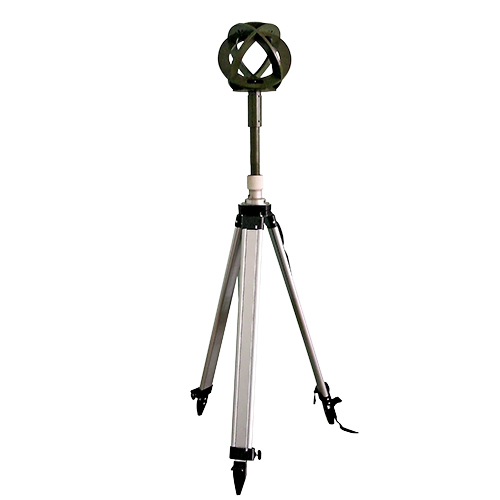
Three-coordinate magnetic antenna AMT-1
NNPO im. M.V.Frunze
Nizhny Novgorod
Produced in: Nizhny Novgorod
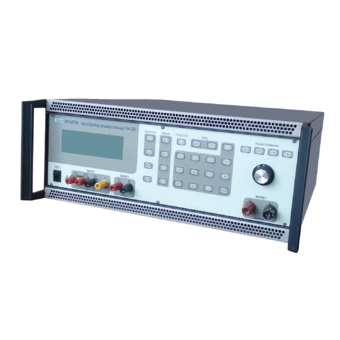
Universal calibrator H4-201
Technical specifications:
reproduction of DC voltage from 50 mv to 1000 V
- ranges of 200 mV; 2; 20; 200; 1000 V
- error 0.01 – 0.023 %
reproduction
of the sinusoidal AC voltage from 0.3 mV to 750 V
- ranges of 200 mV; 2; 20; 200; 750 V
- error 0.15 – 0.225 %
- frequency range 20 Hz - 100 kHz (20 Hz - 5 kHz on the range. 200 V; 20 Hz - 2.5 kHz on the range. 750 V)
reproduction of DC power from 0.03 µA to 50 A
- ranges of 200 Ma; 2; 20; 200 mA; 2; 50 A
- error 0.012 – 0.022 %
reproduction of AC power
of sinusoidal shape from 3 µA to 50 A
- ranges of 200 Ma; 2; 20; 200 mA; 2; 50 A
- error 0.062 – 0.23 %
- frequency range 20 - 5000 Hz (45 - 1000 Hz on the range. 50 A)
RS-232C interfaces; USB
operating temperature range from + 5 to +40oC
dimensions 184.5x465x540.5 mm
weight 20 kg
power supply ~ 230 V
MNIPI
Minsk
Produced in: Belarus, Minsk

Low-frequency signal generator G3-132
Technical specifications:
The waveform is sinusoidal, rectangular (TTL)
Frequency range from 0.1 Hz to 10 MHz
Frequency setting error ±0.02%
Frequency instability ±0.01% in 15 min
Signal amplitude ± 2.5 V at 50 ohm load
±5 V without load
Limits of adjustment of the output signal level from 2 mV to 1.85 V (skz) at a load of 50 ohms
from 4 mV to 3.75 V (scz) without load
Signal level unevenness ± 5% at frequencies from 0.1 to 10 Hz
relative to 1 kHz ± 2% at frequencies from 10 Hz to 1 MHz
±10% at frequencies from 1 to 10 MHz
Harmonic coefficient ± 0.2% at frequencies from 10 to 100 Hz
±0.07% at frequencies from 100 Hz to 20 kHz
± 0.2% at frequencies from 20 to 120 kHz
±1% at frequencies from 120 kHz to 1 MHz
±4% at frequencies from 1 to 10 MHz
Parameters of the rectangular (TTL) signal form log. "1" 3 2.4 V; log. "0" ≤ 0.4 V
In the frequency range from 0.1 Hz to 2 MHz, the duration of the front, the cutoff is not more than 100 ns
Operating temperature range from minus 10 °C to + 40 °C
Power supply ~230 V, 50 Hz; 10 V×A
Dimensions; weight 210×71×255 mm; 2 kg
MNIPI
Minsk
Produced in: Belarus, Minsk
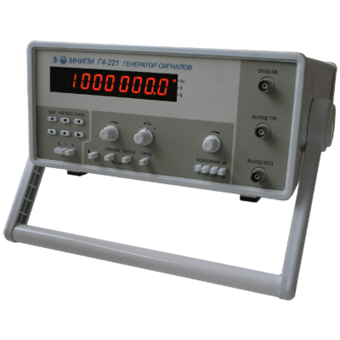
Generators G4-221, G4-221/1
Technical specifications:
Frequency range of sinusoidal waveforms, 0.1 Hz - 17 MHz
Frequency range of rectangular-shaped signals, 0.1 Hz - 1 MHz
Frequency setting discreteness, ±(0.012 + 0.0001 f), f in Hz
Frequency instability in 15 minutes, no more than ± 1•10-5
Smooth signal attenuation, 40 dB
Stepwise signal attenuation, 20, 40, 60 dB
MNIPI
Minsk
Produced in: Belarus, Minsk
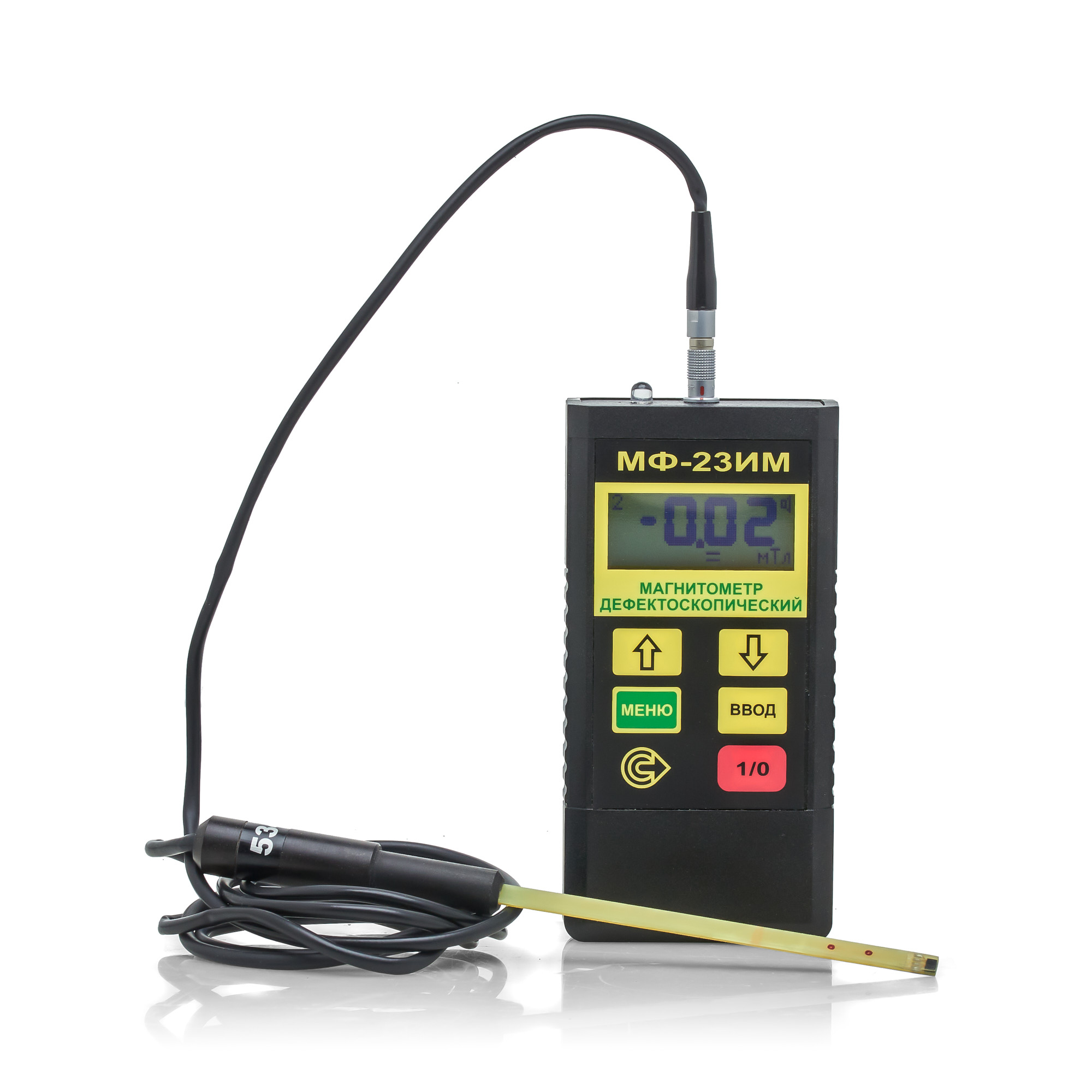
MF-23IM Flaw detection magnetometer
from
168 000 ₽
The MF-23IM flaw detection magnetometer allows you to determine the compliance of the ratio of the tangential and normal components of the magnetic field strength during magnetic particle testing using both the applied field method (AFM) and the remanent magnetization method (RMM) in accordance with the requirements of current regulatory documentation.
The MF-23IM flaw detection magnetometer meets the requirements in the field of non-destructive testing for the main industries: nuclear, energy, oil and gas complex, general and special engineering, railway transport, aerospace industry, elevator and crane facilities.
The flaw detection magnetometer is included in the State Register of Measuring Instruments (GRSI) under No. 20106-00. The magnetometer (milliteslameter) is also included in the register of measuring instruments, testing equipment and measurement methods used at JSC Russian Railways. The flaw detection magnetometer MF-23IM from the manufacturer is used to measure the parameters of constant, variable (industrial frequency) and pulsed magnetic fields when testing ferromagnetic products using the magnetic particle method, as well as to control the level of industrial interference. Specifications.
Magnetic field induction (strength) measurement range: - constant and variable (amplitude and average values) 0.5…1000 mT (4…8000 A/cm) - pulsed (amplitude value) 2…1000 mT (18…8000 A/cm) Indication of measurement results digital or digital + graphic Indicator liquid crystal display Power supply from 1 PP3 battery Current consumption, mA, no more than 15 Memory capacity for storing results 4080 Communication with a computer via infrared channel Dimensions of the electronic unit, mm, no more than 120x60x25 Weight of the electronic unit with battery, g 150
The minimum dimensions of the Hall transducer for the MF-23IM magnetometer make it possible to measure the induction and magnetic field strength in grooves, grooves, corner transitions, i.e. in those areas of the controlled product that are stress concentrators and the most dangerous from the point of view of crack formation; · Measurement of pulsed magnetizing field with pulse duration from 0.5 ms; · Small measurement error (see technical specifications table) · Compact size and low power consumption;
· The magnetometer has 2 modes for displaying measurement results – digital and graphic). The MF-23IM magnetometer in graphical display mode allows you to detect a demagnetizing pulse by displaying its shape and amplitude on a graphic display, as a result of which changes can be made to the magnetization circuit in a timely manner. · The software of the MF-23IM magnetometer allows you to flexibly configure not only the response thresholds, but also the time base, which allows you to tune out false indications caused by reverse emissions of the magnetic field or electromagnetic interference from operating power equipment (magnetizing devices or magnetic particle flaw detectors).
· Determination of the effective magnetization region, within which the tangential component of the magnetic field strength is sufficient for magnetic particle testing, and the ratio of the normal and tangential components of the magnetic field strength is less than or equal to 3. · Checking the mode of magnetization/demagnetization of test objects for compliance with the methodology/technological instructions for magnetic particle testing for a given object.
BASIC SET: Electronic unit Converter 1 Converter 2 Caliber PP3 battery CD with program Case Flaw detection magnetometer MF-23IM. Passport
The flaw detection magnetometer is included in the State Register of Measuring Instruments (GRSI) under No. 20106-00. The magnetometer (milliteslameter) is also included in the register of measuring instruments, testing equipment and measurement methods used at JSC Russian Railways. The flaw detection magnetometer MF-23IM from the manufacturer is used to measure the parameters of constant, variable (industrial frequency) and pulsed magnetic fields when testing ferromagnetic products using the magnetic particle method, as well as to control the level of industrial interference. Specifications.
Magnetic field induction (strength) measurement range: - constant and variable (amplitude and average values) 0.5…1000 mT (4…8000 A/cm) - pulsed (amplitude value) 2…1000 mT (18…8000 A/cm) Indication of measurement results digital or digital + graphic Indicator liquid crystal display Power supply from 1 PP3 battery Current consumption, mA, no more than 15 Memory capacity for storing results 4080 Communication with a computer via infrared channel Dimensions of the electronic unit, mm, no more than 120x60x25 Weight of the electronic unit with battery, g 150
The minimum dimensions of the Hall transducer for the MF-23IM magnetometer make it possible to measure the induction and magnetic field strength in grooves, grooves, corner transitions, i.e. in those areas of the controlled product that are stress concentrators and the most dangerous from the point of view of crack formation; · Measurement of pulsed magnetizing field with pulse duration from 0.5 ms; · Small measurement error (see technical specifications table) · Compact size and low power consumption;
· The magnetometer has 2 modes for displaying measurement results – digital and graphic). The MF-23IM magnetometer in graphical display mode allows you to detect a demagnetizing pulse by displaying its shape and amplitude on a graphic display, as a result of which changes can be made to the magnetization circuit in a timely manner. · The software of the MF-23IM magnetometer allows you to flexibly configure not only the response thresholds, but also the time base, which allows you to tune out false indications caused by reverse emissions of the magnetic field or electromagnetic interference from operating power equipment (magnetizing devices or magnetic particle flaw detectors).
· Determination of the effective magnetization region, within which the tangential component of the magnetic field strength is sufficient for magnetic particle testing, and the ratio of the normal and tangential components of the magnetic field strength is less than or equal to 3. · Checking the mode of magnetization/demagnetization of test objects for compliance with the methodology/technological instructions for magnetic particle testing for a given object.
BASIC SET: Electronic unit Converter 1 Converter 2 Caliber PP3 battery CD with program Case Flaw detection magnetometer MF-23IM. Passport
RII MNPO SPEKTR
Moscow
Produced in: Moscow
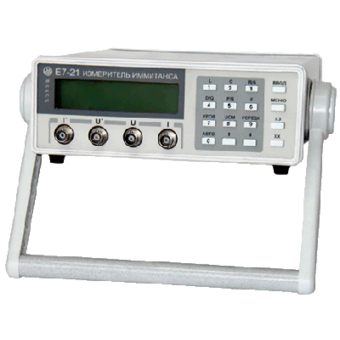
Immitance meter E7-21
Technical specifications:
Capacitance (10-13-0.02) F, inductance (10-8–16x103) Gn
Resistance (10-3–2x107) ohms
Conductivity (10-9-10) Cm
Q factor, loss factor 10-3-103
The error is ±0.15%
Offset voltage 2±0.2 V
Measuring signal levels (0.1±0.02) V and (1±0.2) V
Range selection: automatic, manual
RS-232C interface
Dimensions, weight: 90x265x317 mm, 2 kg
Power supply: ~220V, 10 VA
MNIPI
Minsk
Produced in: Belarus, Minsk
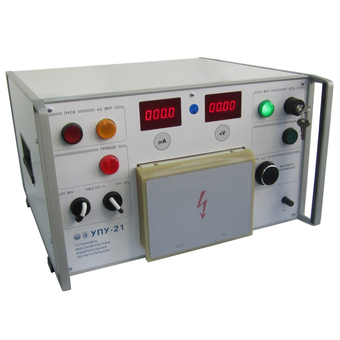
High-voltage test installations UPU-21, UPU-21/2
Technical specifications:
Output constant voltage, 0 - 3 kV; 0 - 10 kV
Output AC voltage, 0 - 3 kV; 0 - 10 kV
Measurement of leakage current, from 0 to 100 Ma
The amplitude value of the output
voltage ripples relative to the set
voltage at a load current of 1 mA, ≤ 5%
The error of setting the output voltage, ≤ 4%
Protection tripping current, up to 50 mA
Output power, 500W
Overall dimensions (HxWxD), 280x480x475 mm
Weight, 36 kg
Operating conditions ,
Operating temperature, from +5 to + 40 °C
Humidity, 80% at 25 °C
MNIPI
Minsk
Produced in: Belarus, Minsk
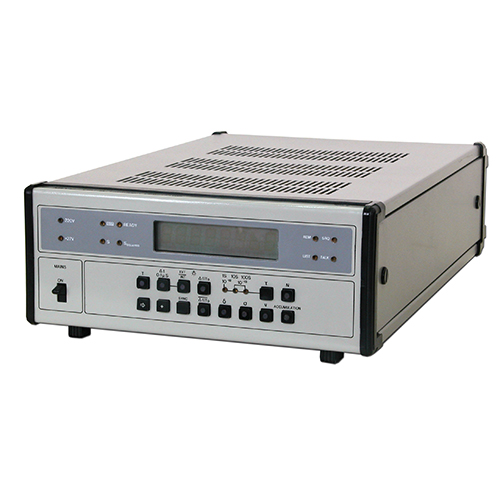
Frequency comparator CHK7-51
Mathematical processing of the measurement makes it possible to determine and display on the indicator board the relative systematic change in frequency, the average relative value of the frequency difference, the RMS relative frequency deviation, the RMS relative two-sample frequency deviation.
NNPO im. M.V.Frunze
Nizhny Novgorod
Produced in: Nizhny Novgorod
